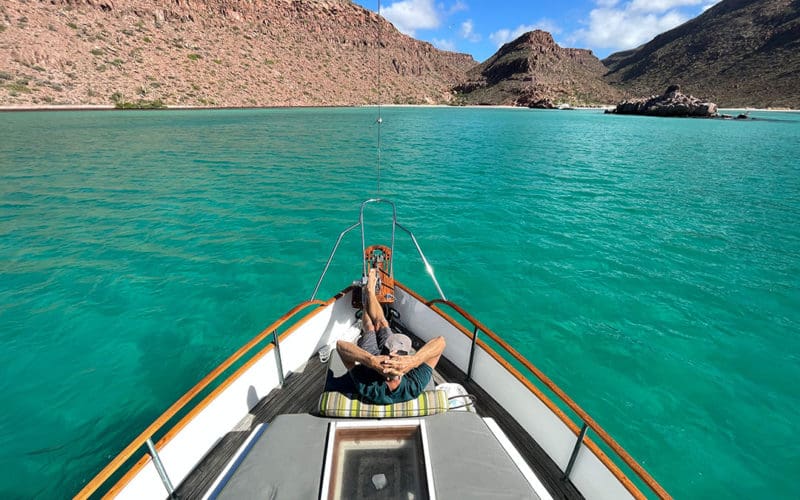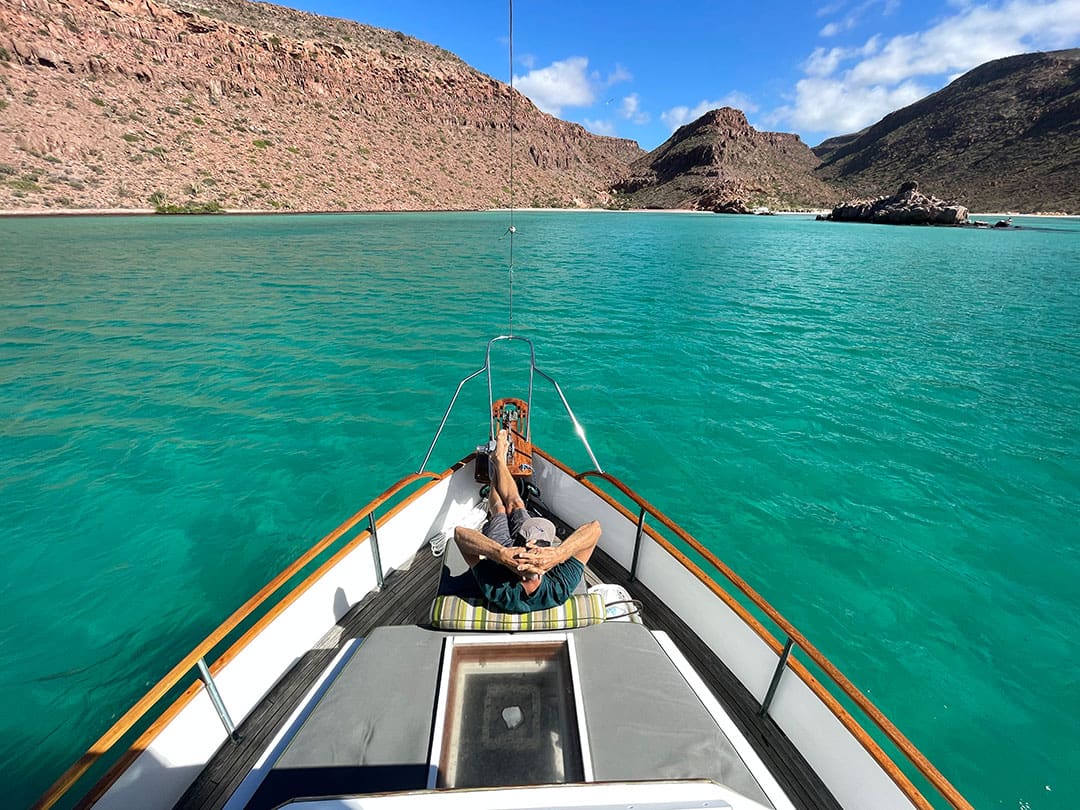
Eric and Kim Paulsen voyage aboard their 1968 Grand Banks 42, Splinters. The couple spent 15 years meticulously rebuilding the boat in a barn on their ranch in Colorado, and moved aboard in 2019. Eric sailed most of his life in the Midwest where his parents owned several sailboats. He spent a year in the Caribbean working on a 64-foot Hinkley doing charter work. He later moved to San Diego and worked for Sailing Supply and was the west coast rep for Schaefer Marine. He raced on Shock 35’s and J 35’s and owned and sailed a Santana 20. He has earned his 101, 103 and 104 ratings from ASA.
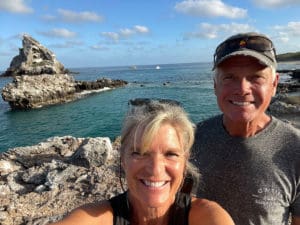
Kim learned to sail on Eric’s Santana 20. She learned to drive boats on their 21-foot Blue Water speed boat, which they’ve owned for 20 years. The couple moved onto their Grand Banks 42 in September of 2019 in San Diego. In February 2020 Eric skippered with Kim as first mate on a bareboat charter out of Palermo, Sicily. In October of that year Eric helped deliver their kids’ new 33-foot Morgan Out Island from Ventura to San Diego.
In 2021 Eric and Kim crewed and explored on an 80-foot Symbol from San Diego to La Paz. Then from Puerta Vallarta to Acapulco and again from the Pacific side of Panama through the canal to the San Blas Islands — which they found “amazing.”
OV: What prompted you to go voyaging?
EP: Growing up sailing, reading sailing magazines and working in the Caribbean gave me a taste of cruising. Both Kim and I love the ocean/sea life and to travel with your home (and living off the grid) is the perfect situation.
OV: How much preparation did you do before setting off?

E&KP: We purchased our Grand Banks 42 in Santa Barbara in November of 2008 and had it trucked to Loveland, Colorado where we lived. From then to November of 2017, Eric rebuilt the boat, including splining the hull and replacing some of the cabin sides, replacing all the electrical, plumbing, fuel tanks, heads and decks. This also included reconfiguring the saloon and master stateroom layout and completely replacing the flybridge. The boat was moved to San Diego in November of 2017 (when Kim’s job asked her to move to San Diego) where it was on the hard and the rebuild was finished in February of 2019. After launching in February of 2019, we lived aboard and did numerous trips to Catalina and up the coast to LA. Several night passages, navigation, anchoring (bow and stern) and general boat handling.
We also had the opportunity to go with a boat, Safari (@cruisinmysafari) from our marina in San Diego to La Paz, then meeting the boat in Puerto Vallarta to Zihuantanejo, then again meeting the boat in Panama through the canal to the San Blas Islands. On that boat we met Captain John Rains who has been an incredible resource and good friend. He and his wife wrote the Mexican Boating Guide and Cruising Ports: The Central American Route… a must-have resource when you travel to Mexico! I am not sure how we would do it without these books (and we would miss a lot). We also met the people who did some free charts for Mexico and well beyond that. I would highly recommend going to the website: chartlocker.brucebalan.com.
OV: What was it about your boat that prompted you to choose it?
E&KP: We loved the space and seaworthiness of the Grand Banks 42 classic. The boat layout, with cabins separated by the saloon, allows two couples to cruise very comfortably. The boat is still small enough to be very efficient in terms of fuel consumption and has excellent range. Also, the flybridge is fully enclosed and creates a great extra room, we love that space.
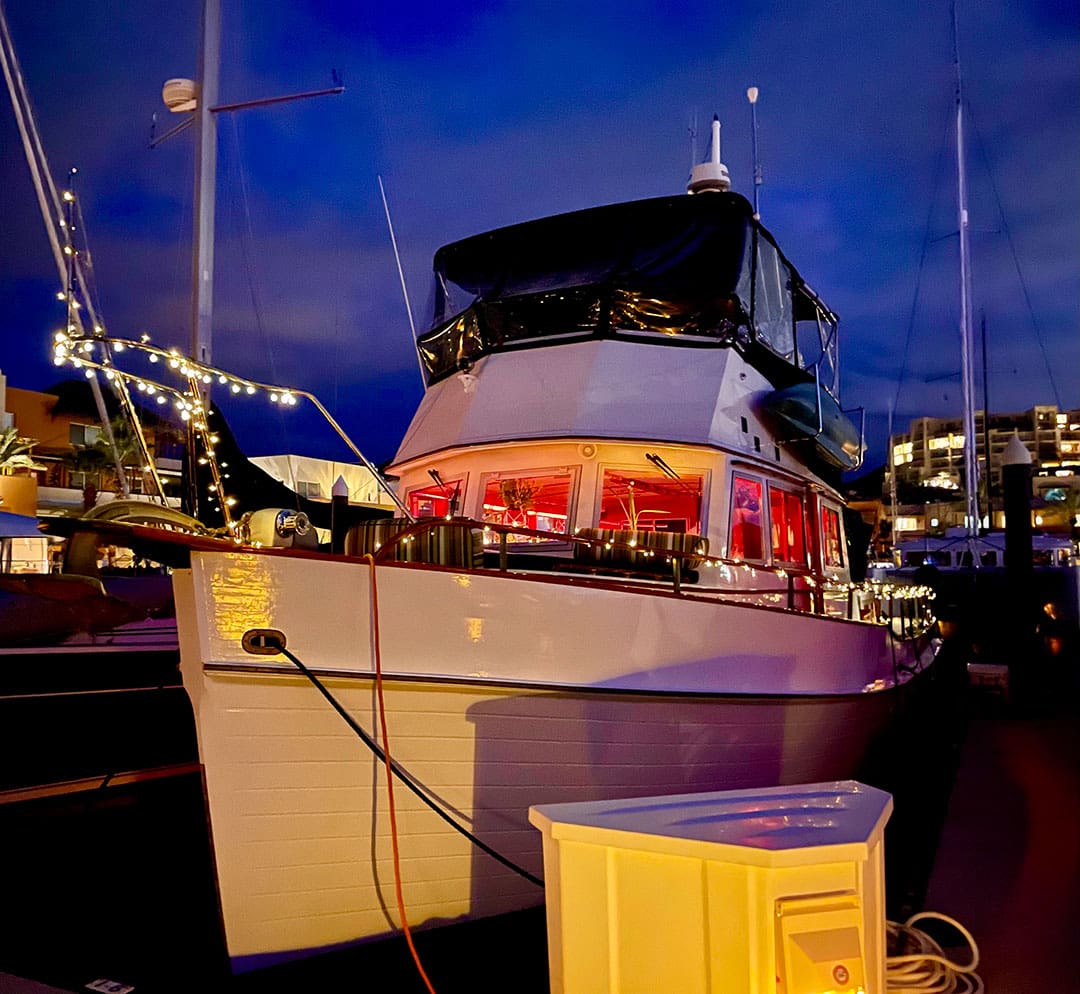
OV: How do you generate electricity onboard? Any other method in addition to the propulsion engine?
E&KP: The boat is set up as a 12-volt boat. We have an inverter but do not have a generator. We generate electricity with our alternators which are 200-amp, permanent magnet, brushless alternators and through 660 watts of SunPower solar panels on the Bimini of our flybridge. We can stay at anchor for about three days without running an engine to charge batteries.
OV: What type and capacity batteries do you have?
E&KP: Our battery bank is 600 amps at 12 volts of Renogy lithium iron phosphate batteries.
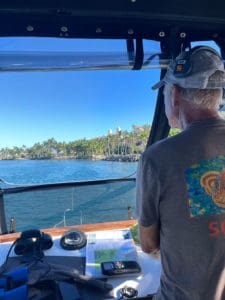
OV: Do you have a WiFi network on your boat?
E&KP: Yes, we have a WiFi booster and router with a Telcel sim card, but we had a very difficult time making it work. We bought all the goodies to try to really get cheap connectivity on the boat through its WiFi with no luck on creating connectivity — in fact, our router and booster seem to compete and cancel each other out! We are still hopeful we can figure it out, but in the meantime, we have been using Telcel sim cards in our phones and using phone hot spots to access the Internet. Works pretty good, actually – but we go through data pretty fast.
OV: Do you use satcom? Do you have an HF SSB radio?
E&KP: We have a receive-only HF radio to get weather when we don’t have cell service. We have an antenna that runs the full length of the boat from bow to stern to create a long-enough run. If we turn off our fridges and instruments, we can usually get a good enough signal to hear critical weather forecasts! Captain John Rains helped us to engineer this with his Hamm buddies.
OV: What’s the most important maintenance task you perform on the boat?
E&KP: Probably keeping engines running smoothly. Keeping engine oil topped up, checking tranny oil, cleaning raw water strainers. Because these Lehman ford engines are so old it’s been tricky to get parts and upgrades, such as adding a serpentine belt arrangement to accommodate the larger alternators
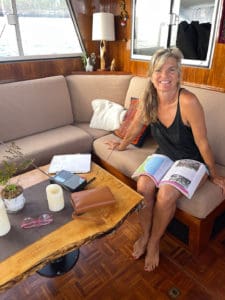
OV: What gear do you plan to add next to your boat?
E&KP: We plan to add an anemometer, another compass in the saloon, upgrade our clock and add a barometer. We also will add a small air-conditioner just for the summer. Our dinghy is definitely in need of wheels and in hindsight we wonder if we should have bought a lighter one for easier access to shore. We have learned to anchor it out a bit from shore… but a good lesson on how to do this would be great for your readers. We also will purchase a depth sounder for the dinghy as well!
OV: What are your future voyaging plans?
E&KP: We are currently in Bahia Tenacatita just north of Barra de Navidad on our way to Puerto Vallarta where we will meet up with Kim’s sister and husband. We plan to be in the La Paz where our kids will be on their boat in mid-March and then cruise north through the Sea of Cortez. We will leave the boat in Mexico for the summer and continue our cruise in the fall. We have not yet decided if next year we will go further south to Costa Rica and Panama or return to the US and head north to Canada and Alaska. All sounds exciting… a little more than two months on the road and we are loving it.

